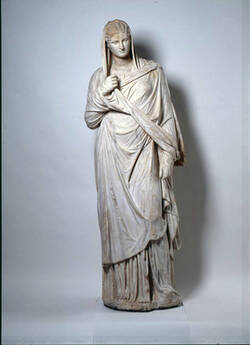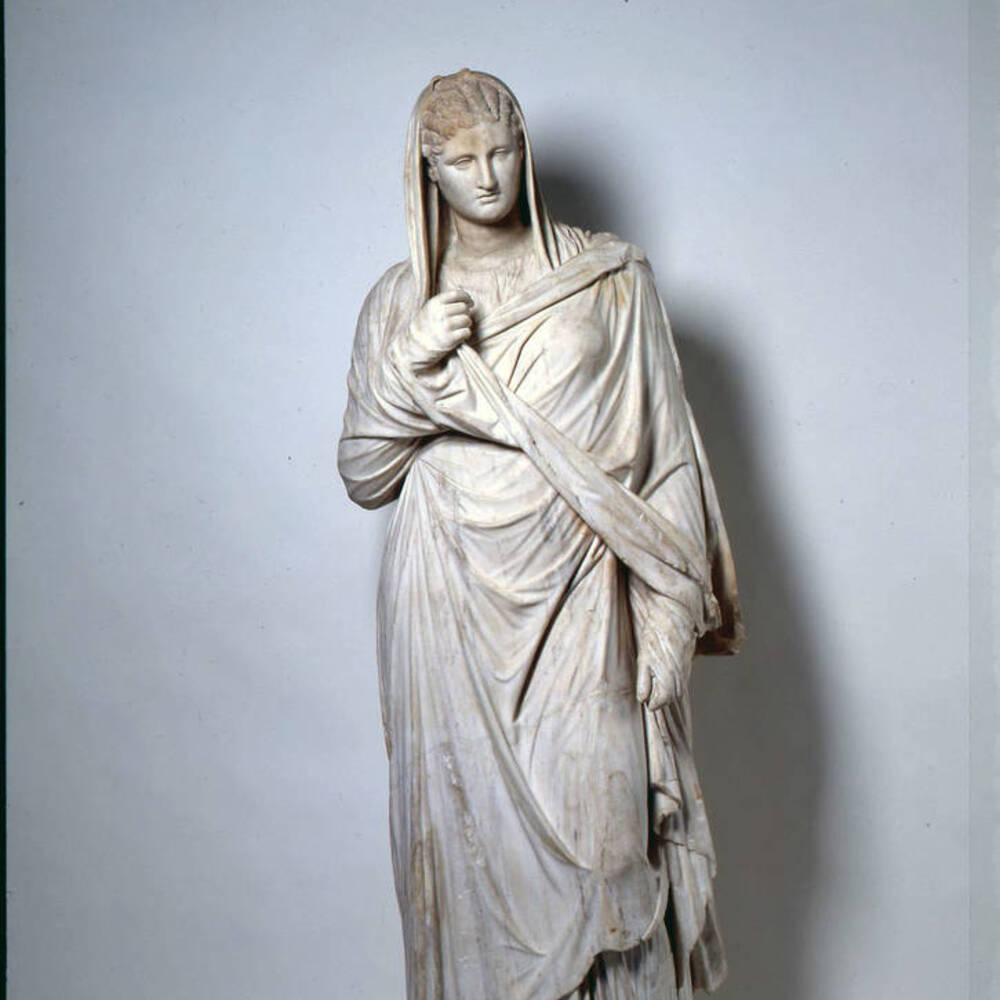These three statues are named after the site of their discovery, the town of Herculaneum, which was buried in the eruption of Mount Vesuvius in 79 CE. Wearing a thin undergarment ( chiton ) and abundant drapery, the ‘Large Herculaneum Woman’ stands in a calm and relaxed pose, her head tilting forward as if pausing in a conversation. The statue conforms to a statuary type that was highly popular from Hellenistic times onwards and whose precedent probably represented a noble citizen of a Greek polis.
Further Media



A cultivated, understated elegance, tightly styled hair, and faces with smooth skin, large eyes, straight noses, and full lips. If there had been glossy mags in those days, you can be sure our Herculaneum Women would have regularly featured on the cover.
During the Roman Empire, such honorific statues of exemplary citizens were set up in nearly all Roman cities.
In the classical world, philosophers and artists were driven by the search for the ideal – in human life and art, in morality and in society. Perfection in looks and character was regarded as a virtue, especially since perfect beauty was thought to be a reflection of personal and moral perfection.
The heads on many of these sculptures are portrait heads, and so are portraits of individual women. Yet these portraits were also informed by the canon of beauty to look like ideal figures, rather like the way today women – and of course men – orchestrate their images on Instagram or other internet platforms.
German scholar Johann Joachim Winckelmann was a pioneer – in a number of areas. He was interested in the classical world, and especially the culture of ancient Greece. Initially, he focused on Greek literature and then became interested in evaluating the authenticity and importance of all possible artefacts, from architecture to art. At first, as is common for pioneers, he had to develop his theories from limited material, especially since there were hardly any classical art works in Germany in those days. Moreover, everything was in ducal and royal collections – many entirely private or hardly accessible for commoners.
For a time Winckelmann lived and studied in Dresden. Here, he gained access to the royal collection. The moment he saw the Herculaneum Women, he fell in love with them. At that time, though, they were not shown in a high, bright gallery as they are today. Instead, as Winckelmann wrote, they were ‘standing in a shed made of boards, packed like herrings’.
He was especially thrilled by their ‘noble simplicity and quite grandeur’. Born in 1717, Winckelmann lived through the late baroque and rococo periods – and so it is easy to understand how exceptional the clear lines of these sculptures, their harmony and balance, must have seemed to him. After all, things looked very different in the colourful, often over-exuberant world of baroque taste.
Later, Winckelmann went to Rome where he developed his modern aesthetics of neoclassical art.
- Location & Dating
- Mid-1st cent. CE, after an original, c. 330/20 BCE
- Material & Technique
- Marble
- Dimenions
- H. von der Sohle bis zum Scheitel 193 cm (ohne Sandale); Kopfhöhe 24 cm
- Museum
- Skulpturensammlung
- Inventory number
- Hm 326